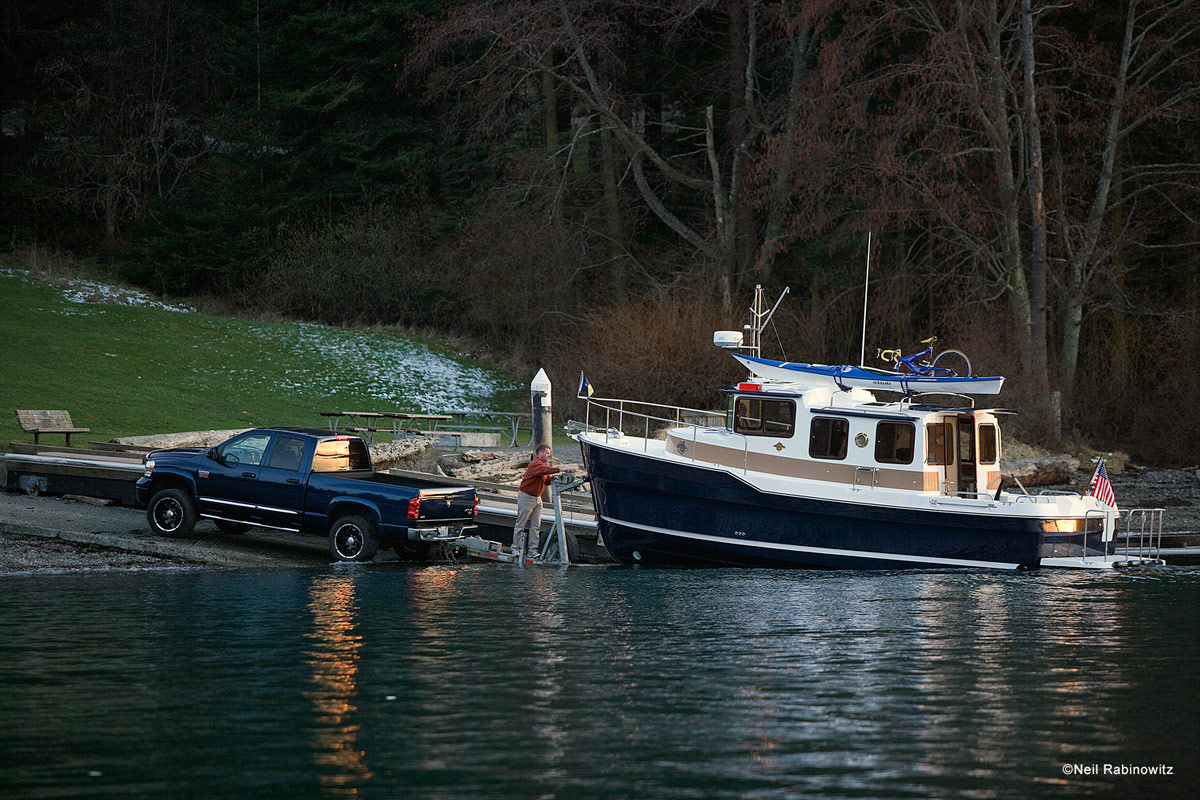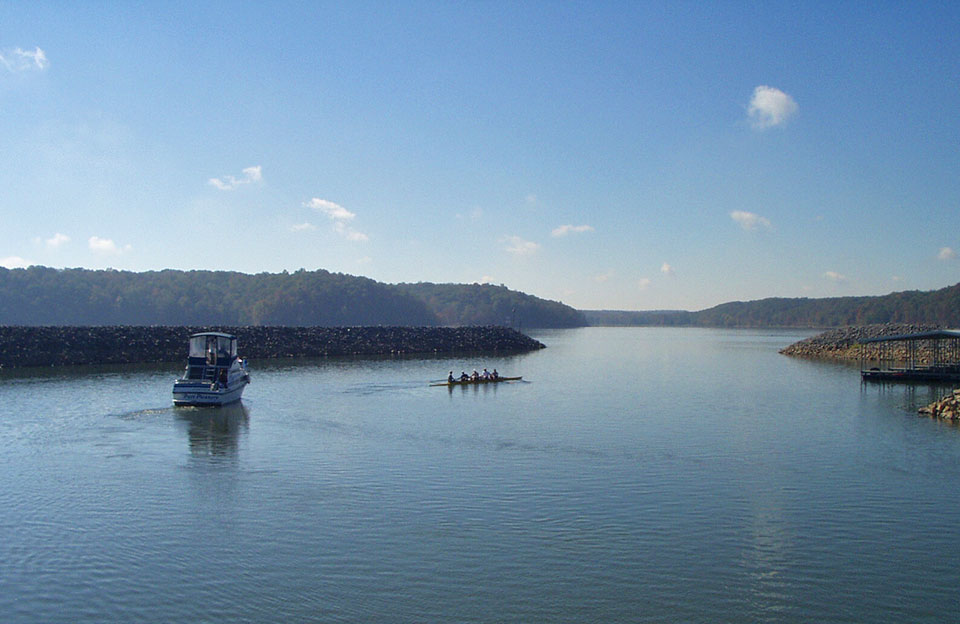Fishing Boat Guide
In the market for a fishing boat? Here are the most important features to consider.
Fishing boats are more popular than ever as tons of new anglers enter the sport. With so many styles and options available, these vessels come highly specialized. Whether you’re looking for your first fishing vessel or getting ready for an upgrade, there are many factors to consider. Let's break down the most important features on a fishing boat.
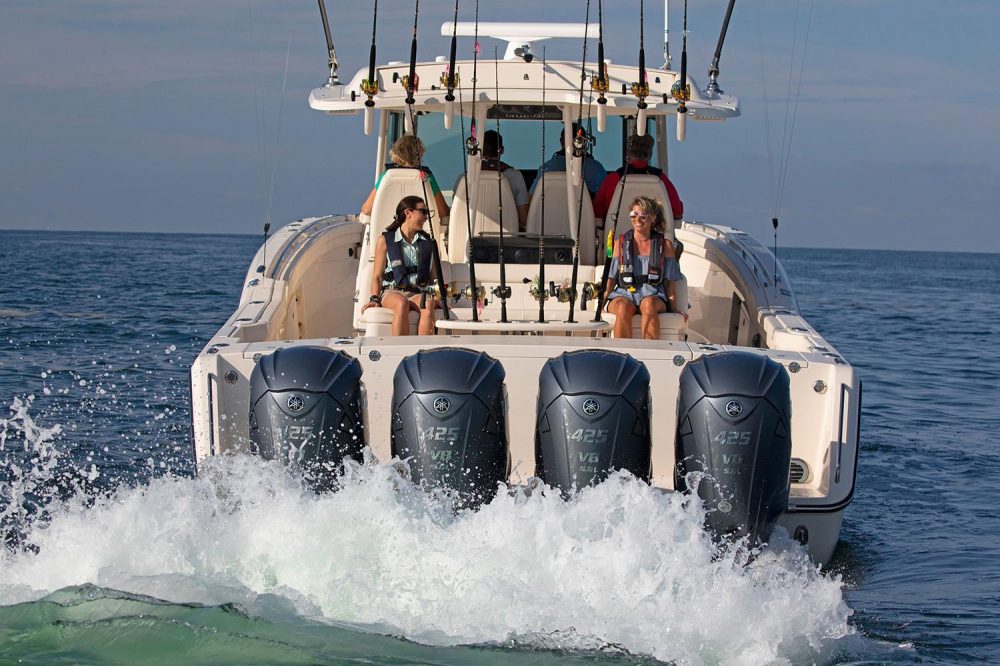
Types of Fishing Boats
In their most basic forms, we can divide fishing boats into two categories: those used for fishing in freshwater ponds, lakes, and rivers, and those used for fishing in saltwater bays and oceans.
Freshwater Fishing Boats
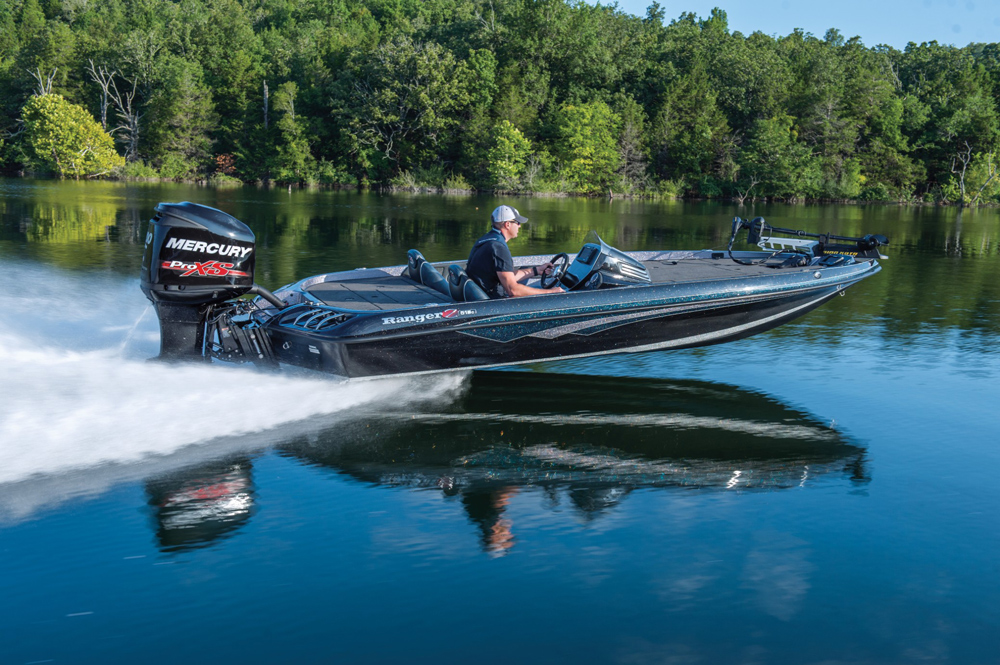
Freshwater fishing boats range in size from the 10-foot-long dinghies you'll find on small ponds to the 30-foot-plus cabin boats on the Great Lakes or other big waters. They also vary in their specialization. Some designs are intended for general use, like jon boats. Jon boats are hulls with bench seats and an outboard motor on the back. With this simplicity comes affordability, making them some of the most economical boats around.
Pontoon boats are another great example of a universal freshwater fishing boats. They’re designed for activities ranging from fishing to water skiing, and thanks to their large decks and open layouts, they are also great for many different kinds of fishing. There are also pontoon boats with specialized platforms for fishing, like the SunTracker Fishing Barge 20 DLX. This model comes with fishing rod holders, two aerated livewells, and multiple casting platforms.
At the other end of the spectrum, there are highly specialized freshwater fishing boats like bass boats and dual-consoles. When it comes to a specific fishing mission, these vessels are usually superior to do-it-all craft like jon boats and pontoons. Just keep in mind that niche fishing boats don’t adapt well to different fisheries. That bass boat may rule the reservoir when it comes to casting the shorelines for largemouth, but it can’t hold a candle to a properly outfitted pontoon boat if you want to troll for walleye. And if one day you want to mix things up and take the kids water skiing or wakeboarding instead of fishing, a specialized fishing boat isn’t the way to go.
Saltwater Fishing Boats
Anglers heading to the ocean or a saltwater bay need a very different type of boat than your average freshwater fishermen — often larger and better equipped for big seas. Saltwater fishing boats are built with different hardware, wiring, and other components that resist corrosion. A boat intended for freshwater use only won’t last very long in the brine. Those designed and built for saltwater use, on the other hand, can be used in freshwater without any problems — and many anglers do go both ways.
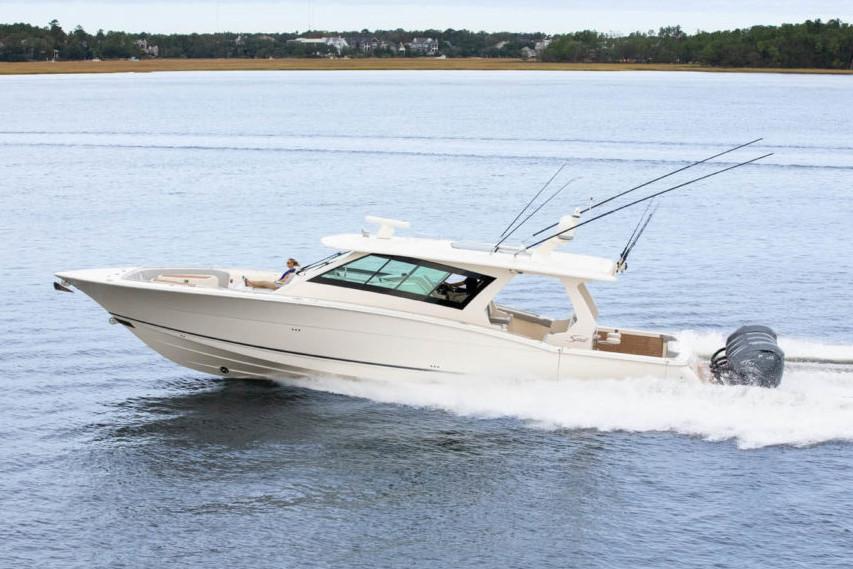
Like freshwater fishing boats, saltwater fishing boats range in size and specialization. In fact, thanks to radically different fisheries, conditions, and distances involved in saltwater fishing, there are even more types of saltwater fishing boats than freshwater fishing boats.
In general, center-console fishing boats are about the most versatile models you’ll find on the water. But even these are somewhat specialized for different fisheries. Bay boats, for example, are ideal for estuarine fishing for species like redfish and speckled sea trout. Center console yachts like the Scout 530 LFX are designed for runs through the open ocean — and by default, not appropriate for the shallow waterways where the bay boat thrives.
When you’re choosing a specialized fishing vessel, keep in mind the kinds of runs you’ll be doing. Where you fish most commonly will affect the type of boat you want to buy. While a few extra feet can be tempting, if you intend on taking the boat into back bays or flats, something smaller may be a better option. If your boat is going to be docked in a tidal area, consider the minimum depth on low tides so your boat isn't stuck in its slip when the tide is out.
Kayaks
Sure, kayaks may have a smaller range than your traditional fishing craft, but they're great for sliding into shallows or traversing big water, depending on the type. Fishing kayaks differ from regular kayaks since they have more features geared toward anglers. The Hobie Mirage Pro Angler 14 360, for example, has built-in vertical rod holders positioned for trolling, a pivoting tackle storage system, and an easy-to-reach front hatch with a removable liner, great for storing fish.
Generally, fishing kayaks are propelled in one of two ways: by pedal drive or paddle. Pedal drives free up anglers' hands for fishing and allow them to reposition as they fight fish. Without paddles to worry about, pedal-powered boats also hold more gear. Plus, they're more efficient, thus permitting anglers to travel further. While pedal kayaks have their advantages, paddle-powered yaks are better suited for traversing weedy and shallow water. Of course, they’re lighter too, which is critical if you plan to travel with the kayak on top of the water.
There are other personal watercrafts on the market designed for fishing, as well, like the 2022 Sea-Doo FishPro Trophy. This PWC is loaded with features like rod holders and direct-access front storage. PWCs like this are great for anglers who take solo runs and like to fish in difficult-to-reach spots.
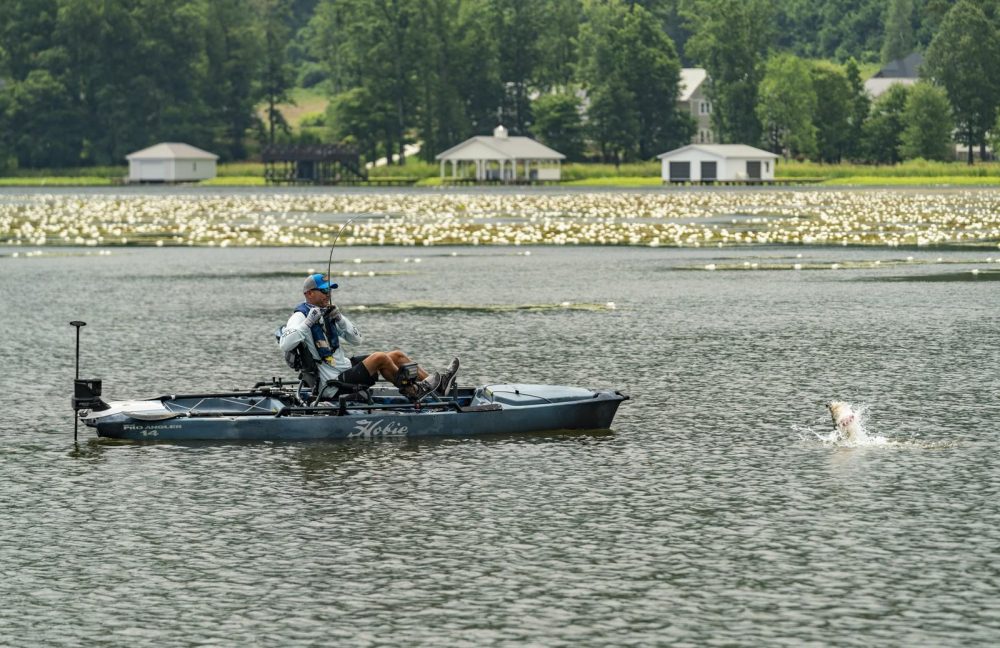
Fishing Boat Materials
Aluminum and fiberglass are standard materials for most modern fishing boats. Rotationally molded plastic is also a popular choice for small boats like car-toppers, kayaks, and canoes. Generally, you'll find plastic in small boats up to 12 feet, aluminum in small to medium-size boats up to the mid-20-foot range, and fiberglass in medium to large boats over 16 feet. Here are the key characteristics of each material.

Aluminum
One advantage of aluminum is that it’s lighter than fiberglass or plastic. This is optimal for anglers looking for a boat they can tow. Aluminum is also less expensive than fiberglass, with maintenance requirements as the trade-off. Plus, aluminum dents instead of shattering. Of course, it can be challenging to mold aluminum into complex hull shapes, which limits the styles available on the market.
Fiberglass
Fiberglass boats are usually molded or constructed to allow for complex hull forms, integrated features, and built-in compartments. These features make fiberglass the top choice for offshore anglers. While fiberglass boats can be specialized, they are also heavier and more expensive than aluminum or plastic boats.
Plastic
Plastic boats are rugged and versatile. They require little-to-no maintenance unless there is a break — and in that case, you can patch up the hole with plastic welding. When a plastic boat gets a dent, it will just bounce back to its original form.
Generally, plastic boats are lighter and less expensive than fiberglass boats, although this becomes less true as boat size increases.
Fishing Boat Sizes
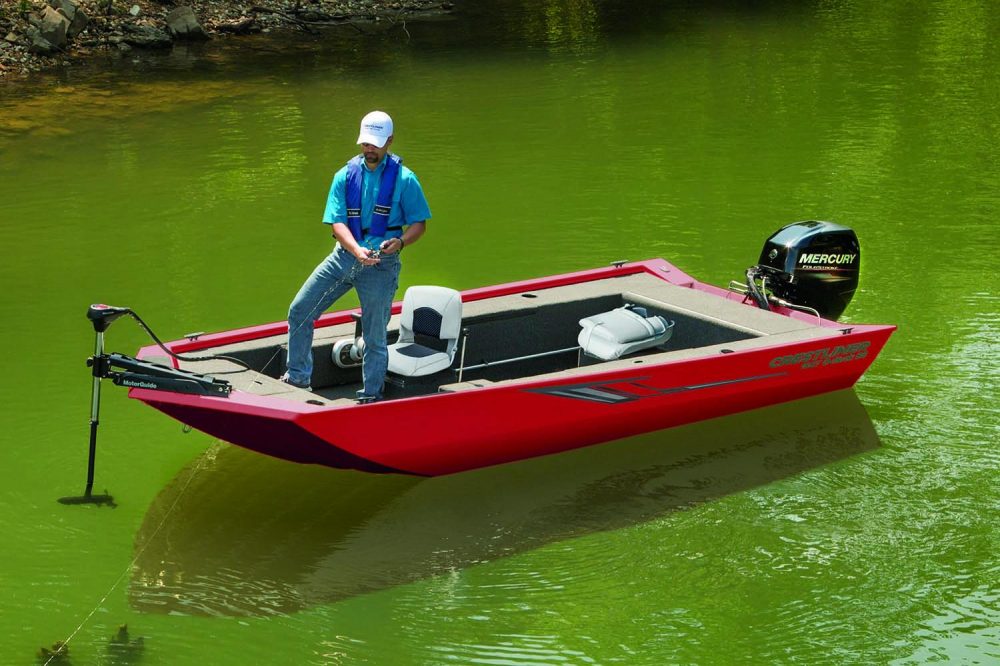
What is the best size for a fishing boat? This is a question our boating experts hear all the time. The answer comes down to judgment calls and personal preference. You can find a 20-foot fishing vessel capable of handling rougher seas than a boat twice its size. Boat hull shape comes into play here since they affect stability and water access. Deep-V hulls provide the best stability in rough water. Catamarans also have a shallower draft and increased stability.
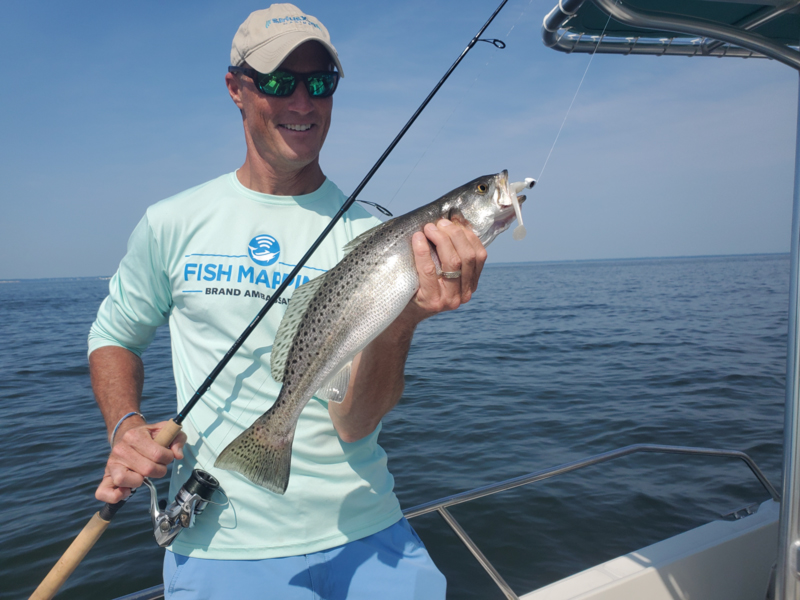
Tight lines and happy boat hunting, anglers. Still getting comfortable on the water? Here are the most important skills for anglers, plus our best fishing tips.








